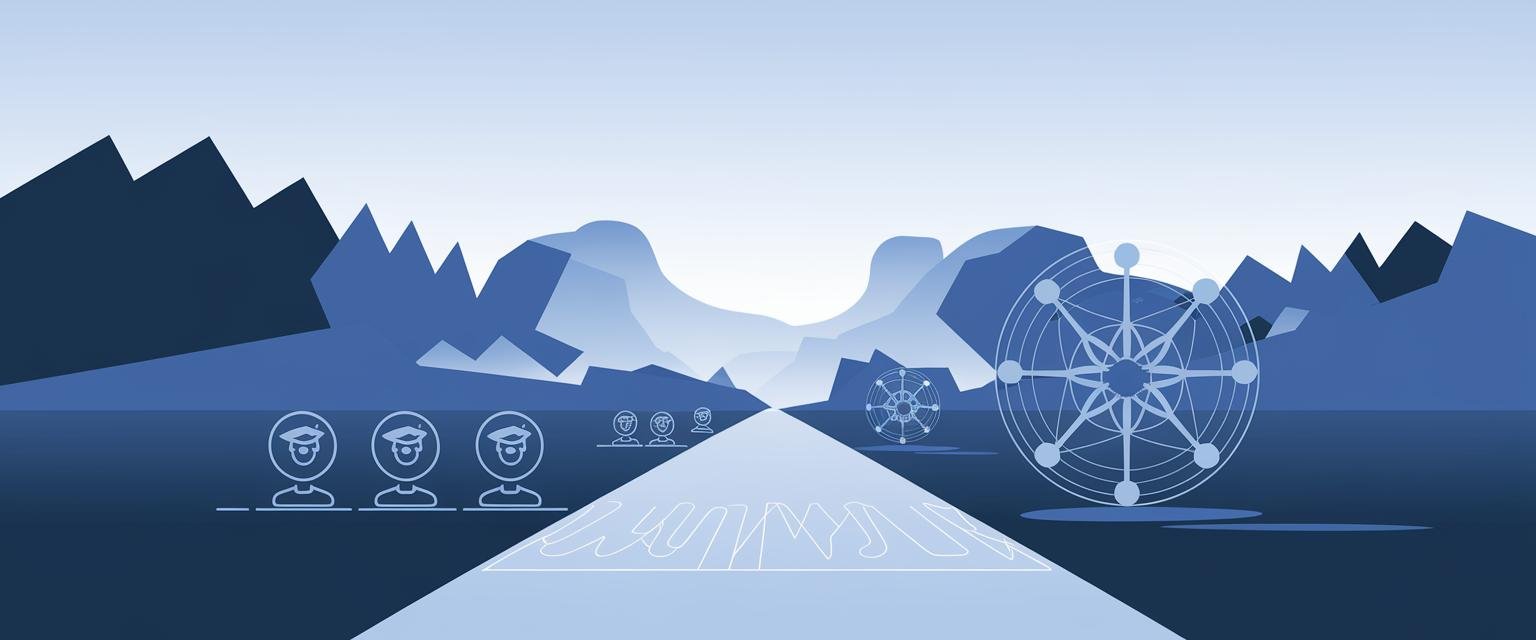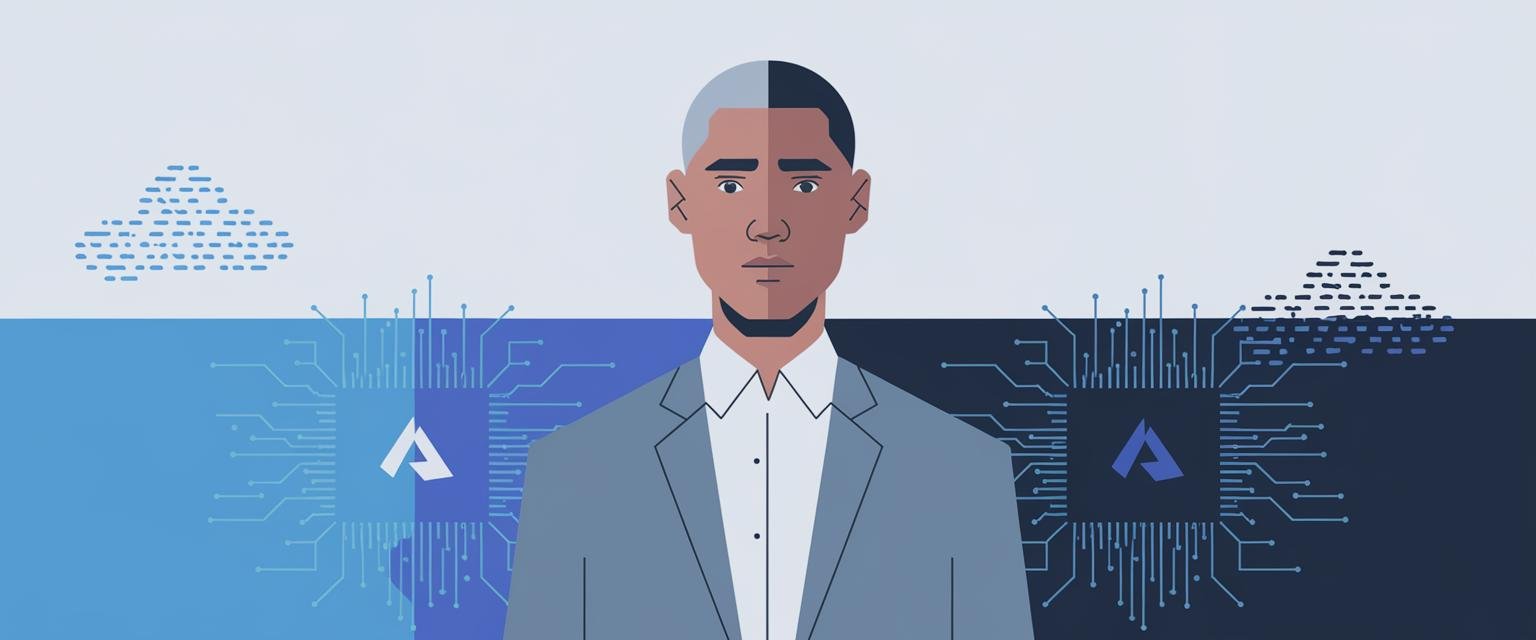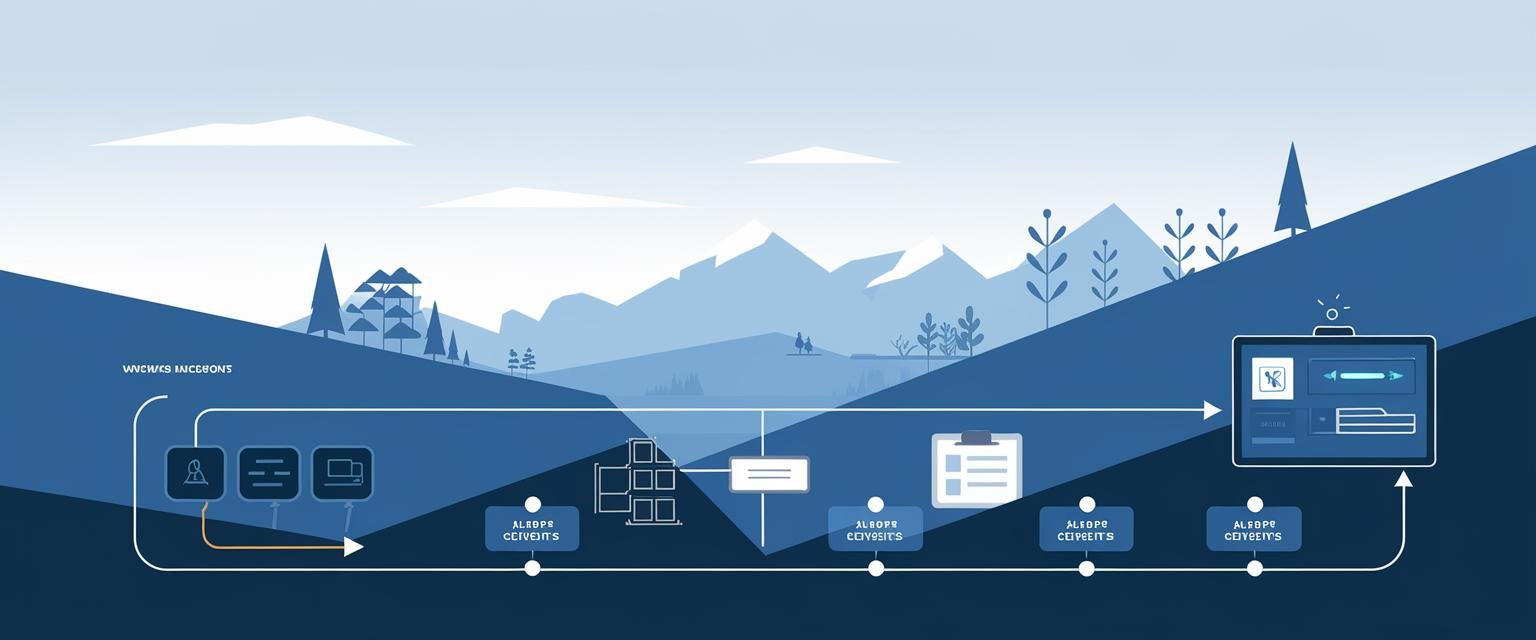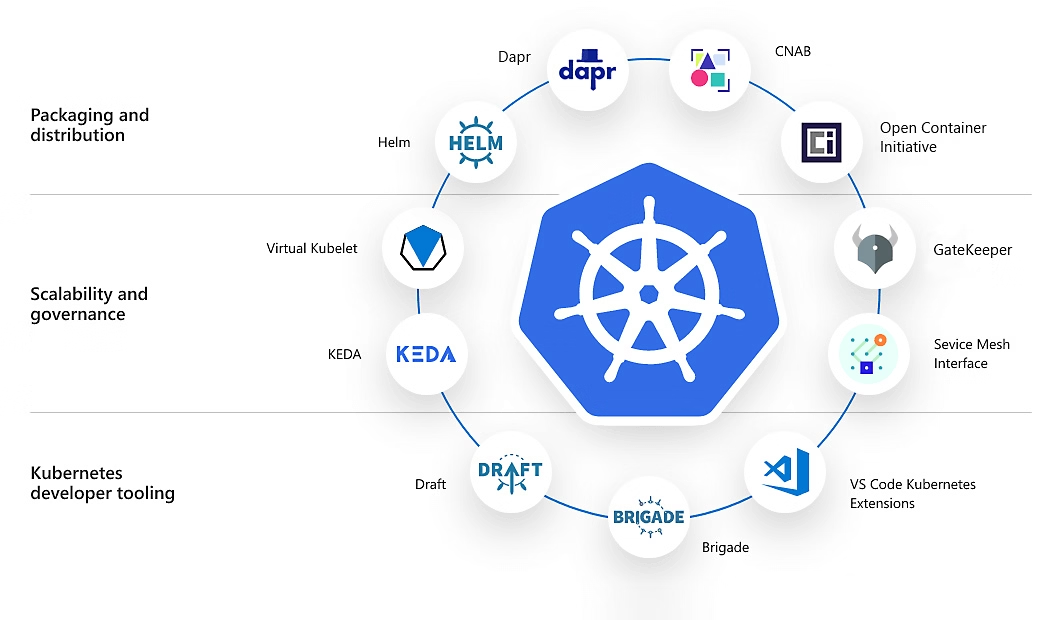When I was studying at Jadavpur University, I barely heard about cloud computing—it was just starting to emerge. Now? It’s completely flipped how businesses operate, and I’ve seen this transformation firsthand in both product companies and client-focused organizations.
Azure training has quickly become one of the smartest career investments tech professionals can make. Microsoft’s cloud platform continues to grow, and I’ve watched the demand for Azure skills skyrocket. Let me share what I’ve learned about how Azure training can boost your career prospects, especially if you’re making that tough transition from college to professional life.
The Expanding Azure Ecosystem and Job Market
The cloud computing market isn’t just growing—it’s exploding. Microsoft Azure has secured its spot as a leading platform, capturing about 22% of the global cloud market share. This makes it the second-largest cloud service provider behind AWS, according to recent data from Cloudthat (2023).
What does this actually mean for your career? Opportunity—and lots of it. I’ve watched companies of all sizes scramble to migrate to cloud platforms, creating a huge demand for Azure expertise. Job postings requiring Azure skills have jumped by over 75% in just the last two years.
I remember when I first started Colleges to Career. I noticed a massive gap between what students were learning in college and what employers actually needed. Traditional IT skills were becoming less valuable while cloud expertise was becoming essential. This observation drove me to transform our platform from a simple resume template page into a comprehensive career resource.
The salary data tells the same story. Azure-certified professionals earn 15-20% more than their non-certified colleagues in similar roles. In the US, Azure Cloud Architects average over $160,000, while Azure DevOps Engineers pull in above $130,000. Not bad, right?
The hottest Azure roles right now include:
- Cloud Solution Architects
- Azure DevOps Engineers
- Azure Administrators
- Cloud Security Specialists
- Data Engineers
I’ve seen Azure talent being snatched up across nearly every industry—finance, healthcare, retail, manufacturing, and government. That’s what makes these skills so valuable—they’re in demand everywhere.
Azure Certification Pathways for Career Advancement
One thing I really appreciate about Microsoft’s approach is their clear certification pathway. Unlike some other platforms (looking at you, AWS), Azure’s certifications are straightforward and map directly to specific job roles.
The typical progression looks like this:
- Fundamentals (AZ-900) – Perfect for beginners, even if you don’t have a deep technical background
- Associate level – Role-specific certifications (Administrator, Developer, Security)
- Expert level – Advanced specializations (Solutions Architect, DevOps Engineer)
- Specialty certifications – Focused on specific technologies (AI, IoT, Data)
When I’m coaching students through our interview preparation platform, I almost always recommend starting with the AZ-900 certification. It builds a solid foundation without requiring years of tech experience to get started.
Price-wise, Azure certifications are pretty reasonable compared to AWS and Google Cloud. Exams cost between $99 for Fundamentals and $165 for Associate and Expert levels. Think about it—that’s a tiny investment compared to the potential salary bump you’ll get.
I’ve seen the ROI firsthand. Many professionals in my network landed better job offers or promotions within 3-6 months after getting certified. In today’s job market, that Azure certification might be the difference between your resume getting noticed or buried.
Practical Skills Gained Through Azure Training
Azure training isn’t just theoretical knowledge—it gives you hands-on skills that employers actually value. Through our learning resources, I always emphasize practical application over memorizing facts.
Last year, I helped a struggling junior developer implement his first cloud solution using Azure App Service and SQL Database. Within weeks, he was confidently deploying code that previously would have taken him months to figure out on traditional infrastructure. That’s the kind of transformation I see all the time.
Here are the key technical skills you’ll develop through Azure training:
- Cloud infrastructure deployment and management
- Security implementation and compliance
- Cost optimization strategies (my clients love this one!)
- Performance monitoring and troubleshooting
- Integration with existing systems
- Automation and scripting
- Disaster recovery planning
What’s often overlooked is how Azure training enhances your problem-solving abilities. Cloud environments require systems thinking—understanding how different components interact. I’ve found this skill translates well to virtually any technical role.
The best Azure training includes hands-on labs and real-world scenarios. Theory alone won’t cut it—you need to actually build and configure Azure resources to truly master the platform. I learned this the hard way when I first started with Azure and tried to learn everything from books!
I’ve noticed that professionals who combine Azure knowledge with expertise in their specific industry become incredibly valuable. For example, a healthcare professional with Azure skills can implement HIPAA-compliant cloud solutions—a specialized skill that commands premium pay.
Azure Training’s Impact on Career Versatility
Here’s what I love about Azure skills—they’re incredibly flexible. Your cloud knowledge works whether you’re in healthcare, banking, retail, or manufacturing. I’ve watched colleagues hop between completely different industries without missing a beat, all because their Azure expertise traveled with them.
Azure knowledge also creates a solid foundation for learning other cloud platforms. Once you understand Azure well, the concepts in AWS and Google Cloud become much easier to grasp. The architectural principles are similar across platforms.
Many organizations are adopting a hybrid cloud approach, which makes Azure skills even more valuable. Azure integrates smoothly with on-premises systems, so professionals need to understand both traditional IT and cloud environments. This creates a sweet spot for anyone with Azure training.
Another advantage is Microsoft’s integrated ecosystem. Azure connects with Microsoft 365, Dynamics, Power Platform, and other Microsoft services. This means Azure professionals can easily expand into these related technologies. I’ve seen this create multiple career paths for people who started with just Azure basics.
Cross-Platform Comparison
| Feature | Azure | AWS | Google Cloud |
|---|---|---|---|
| Enterprise Integration | Excellent (Microsoft ecosystem) | Good | Good |
| Hybrid Cloud Options | Excellent | Good | Improving |
| Learning Curve | Moderate | Steep | Moderate |
| Certification Structure | Clear, role-based | Complex, service-based | Straightforward |
Learning Resources and Training Approaches
When I first started learning Azure, I was completely overwhelmed by the options. Now, I recommend a mixed approach based on your learning style and goals.
Self-paced learning through Microsoft Learn offers free, high-quality content organized into logical learning paths. It’s an excellent starting point, especially if you’re on a budget. I still use it to keep up with new Azure features.
For more structured learning, instructor-led training through Microsoft’s official partners provides guided instruction and valuable Q&A opportunities. These typically cost $1,500-3,000 depending on course length and level.
Boot camps offer intensive, immersive experiences that can fast-track your learning. While more expensive ($4,000-6,000 on average), they can be worth it if you need to skill up quickly. I attended one in 2019 and was amazed at how much we covered in just one week.
Time investment varies by certification level:
- Fundamentals: 20-40 hours of study
- Associate: 80-120 hours
- Expert: 120-180 hours
My personal approach involved starting with Microsoft Learn for fundamentals, then using a combination of instructor-led training and hands-on labs for more advanced topics. The key was consistent practice—I set up test environments, built solutions, and purposely broke things to learn how to fix them.
Through our Colleges to Career platform, we’ve discovered that students learn best from resources that balance theoretical knowledge with practical application. Abstract concepts don’t stick until you’ve actually implemented them yourself.
Real-World ROI from Azure Training
Let’s talk concrete benefits. What can you actually expect after completing Azure training?
According to Trainocate, 23% of IT professionals reported salary increases after earning Azure certifications. The average increase ranges from 15% to 30%, depending on your experience level and location.
I’ve seen this play out in my own career. After completing my Azure Solutions Architect certification, I was able to lead cloud migration projects that previously would have been assigned to senior architects. This visibility led to new opportunities and a substantial salary increase within six months.
Beyond salary, Azure certifications often lead to expanded responsibilities, leadership roles, and involvement in more strategic projects. Many professionals report increased job satisfaction as they move from routine maintenance to innovation-focused work.
Job mobility improves significantly too. Azure-certified professionals typically receive more interview invitations and job offers compared to non-certified peers. This creates leverage for negotiating better compensation and benefits.
Time-to-value varies, but most professionals see tangible benefits within 3-6 months of certification. Entry-level positions may open up immediately after certification, while more advanced roles might require combining certification with practical experience.
The non-financial benefits are equally important—greater job security, more interesting projects, and improved professional confidence. In an industry that changes rapidly, Azure certification signals your commitment to staying current.
Common Azure Learning Challenges (And How to Overcome Them)
Learning Azure isn’t always smooth sailing. Here are some challenges I’ve faced personally and have seen students struggle with:
The Overwhelm Factor
Azure has hundreds of services, and it’s easy to feel lost. My solution? Focus on core services first (VMs, Storage, Networking) before branching out. I created a learning map and tackled one service per week when I started.
Theoretical vs. Practical Knowledge
You can read documentation all day, but until you build something, it won’t stick. I recommend setting small, achievable projects—even something simple like hosting a personal website on Azure App Service gives you practical experience.
Keeping Up With Changes
Azure evolves constantly. Rather than trying to keep up with everything, I subscribe to Azure updates in my core areas of interest and set aside 2-3 hours each month to review changes.
Cost Concerns
Learning can get expensive if you’re not careful. I’ve accidentally run up a few surprising bills during my learning journey! Use the free tier strategically, set up budget alerts, and remember to shut down resources when you’re not using them.
FAQ Section
How does Azure training enhance career prospects?
Azure training directly impacts your employability by aligning your skills with market demand. According to the Microsoft Developer Blog, 90% of Fortune 500 companies use Azure services, creating substantial demand for qualified professionals.
Having that Azure certification on your resume isn’t just nice—it shows employers you know your stuff and reduces their hiring risk. I’ve noticed more and more job listings that have moved Azure certification from the “preferred” column to the “required” column.
Beyond technical validation, Azure training demonstrates your commitment to professional growth. Employers value professionals who take initiative to stay current with technology trends.
What topics are covered in Azure training courses?
Azure training spans a wide range of topics, tailored to different roles and experience levels:
For beginners, courses cover cloud concepts, Azure services, security, privacy, compliance, and pricing models.
Intermediate courses delve into specific areas like:
- Virtual machines and networks
- Storage solutions
- Identity management
- Monitoring and analytics
- App Services and containers
- Database solutions (SQL, Cosmos DB)
Advanced courses focus on specialized topics such as:
- Cloud architecture
- DevOps practices
- Machine learning and AI
- IoT implementation
- High availability and disaster recovery
- Security implementation
The curriculum continues to evolve as Microsoft adds new services and features to the Azure platform.
How long does it take to become proficient in Azure?
The timeline varies based on your background and learning pace. With a technical background, you can achieve fundamental proficiency in 1-3 months of dedicated study. Reaching associate-level expertise typically requires 3-6 months, while expert-level mastery may take 1-2 years of combined study and practical experience.
In my case, it took about 4 months of focused study to feel comfortable with the core Azure services, but I’m still learning new aspects today, three years later. The platform is that extensive!
The key factor is hands-on practice. Theoretical knowledge alone isn’t enough—you need to implement solutions and solve real problems to develop true proficiency.
Is Azure training worth it compared to AWS or Google Cloud training?
All three major cloud platforms offer valuable career opportunities. Your choice should align with your career goals and the market you’re targeting.
Azure offers distinct advantages in certain contexts:
- Organizations heavily invested in Microsoft technologies
- Enterprise environments with hybrid cloud needs
- Government and healthcare sectors where Azure has strong compliance offerings
When I was deciding which cloud platform to specialize in, I looked at job postings in my target industries and found Azure skills were specifically requested in about 60% of enterprise-level positions.
Many professionals eventually learn multiple cloud platforms. Starting with Azure provides an excellent foundation that makes learning other platforms easier later in your career.
Which Azure certification should I pursue first?
For most beginners, the AZ-900 (Azure Fundamentals) certification is the ideal starting point. It introduces core concepts without requiring deep technical background. From there, your path should align with your career goals:
- For administrative roles: AZ-104 (Azure Administrator)
- For development roles: AZ-204 (Azure Developer)
- For security focus: AZ-500 (Azure Security Engineer)
Your educational background and experience will influence this decision. Computer science graduates may move directly to role-based certifications, while those from non-technical backgrounds benefit from starting with fundamentals.
How can I gain practical Azure experience while learning?
The Azure free tier provides $200 credit for the first 30 days and maintains some services free indefinitely. This allows you to create a personal lab environment for practice.
GitHub student benefits include additional Azure credits for eligible students.
Microsoft Learn includes hands-on labs integrated with learning paths.
Practical experience can also come from:
- Contributing to open-source projects using Azure
- Volunteer work for non-profits needing cloud solutions
- Creating personal projects that showcase your Azure skills
- Participating in Microsoft Azure hackathons
I started by migrating my personal blog to Azure and setting up continuous deployment. It was a small project, but it taught me the fundamentals of App Service, Storage accounts, and Azure DevOps.
When building your resume through our platform, be sure to highlight these practical experiences alongside your certifications.
Key Takeaways
- Market Demand: Azure skills are in high demand with 22% global cloud market share and growing
- Salary Impact: Azure-certified professionals earn 15-30% more than non-certified peers
- Career Flexibility: Azure skills transfer across industries and create multiple career paths
- Clear Certification Path: Microsoft offers a structured, role-based certification program
- Rapid ROI: Most professionals see tangible benefits within 3-6 months of certification
- Hybrid Value: Azure’s strong integration with on-premises systems creates unique opportunities
Conclusion
Azure training represents one of the most valuable investments you can make in your tech career today. The cloud computing revolution isn’t slowing down, and Microsoft Azure continues to expand its market presence. By developing Azure expertise now, you’re positioning yourself for long-term career growth in a technology landscape that increasingly relies on cloud infrastructure.
Ready to jump into Azure? Here’s your game plan:
- Start with the AZ-900 fundamentals (it’s designed for beginners)
- Get your hands dirty with the free Azure tier
- Check out our step-by-step video lectures to fast-track your progress
- Set up your first cloud project within 30 days
Don’t wait—the cloud job market isn’t slowing down! And if you’re ready to showcase your Azure skills on your resume, our resume builder can help you highlight your cloud expertise in a way that catches employers’ attention.
Have you started your Azure journey yet? What challenges are you facing? Share your experience in the comments below, and I’ll personally respond with advice based on my experiences.










